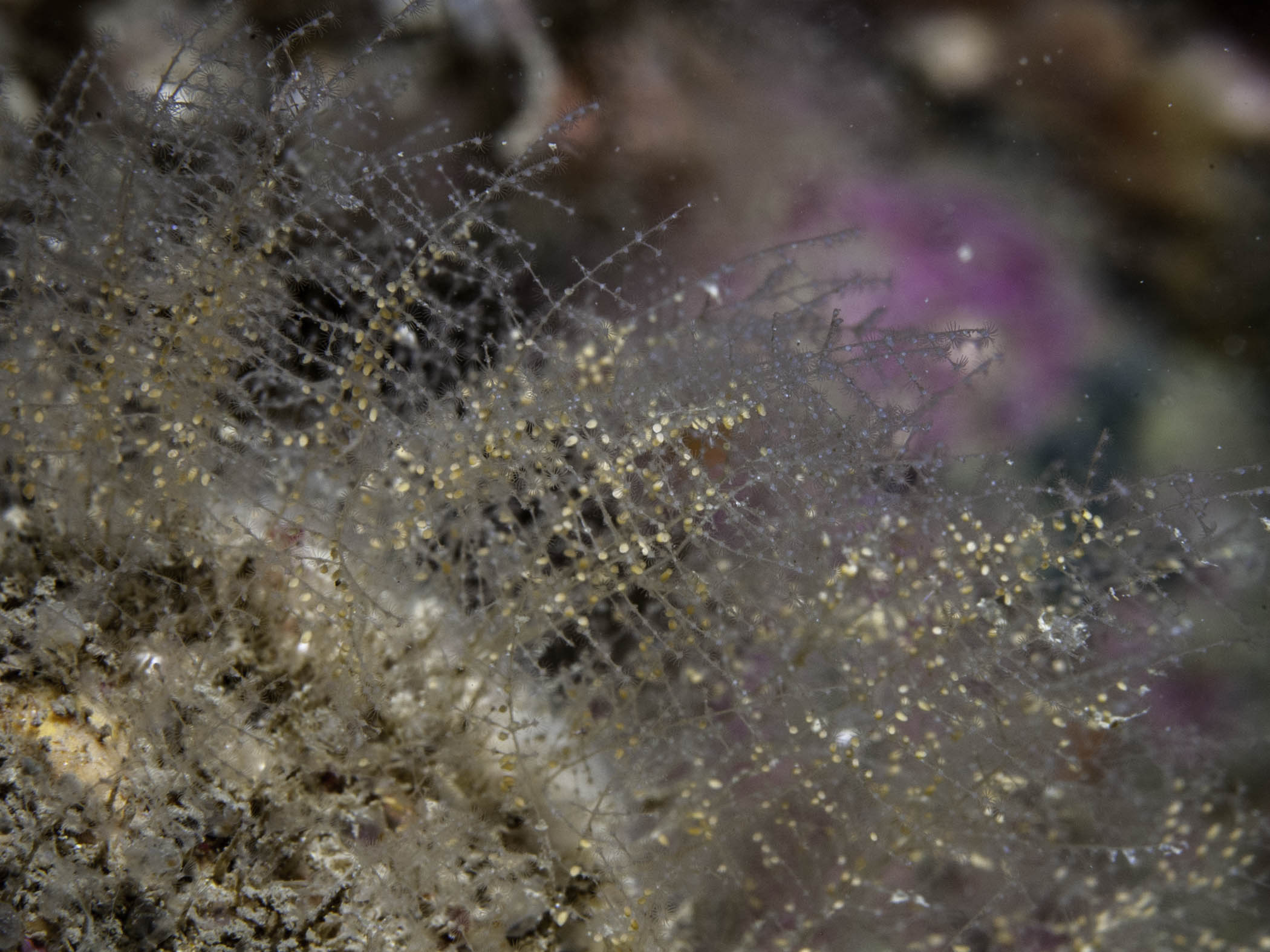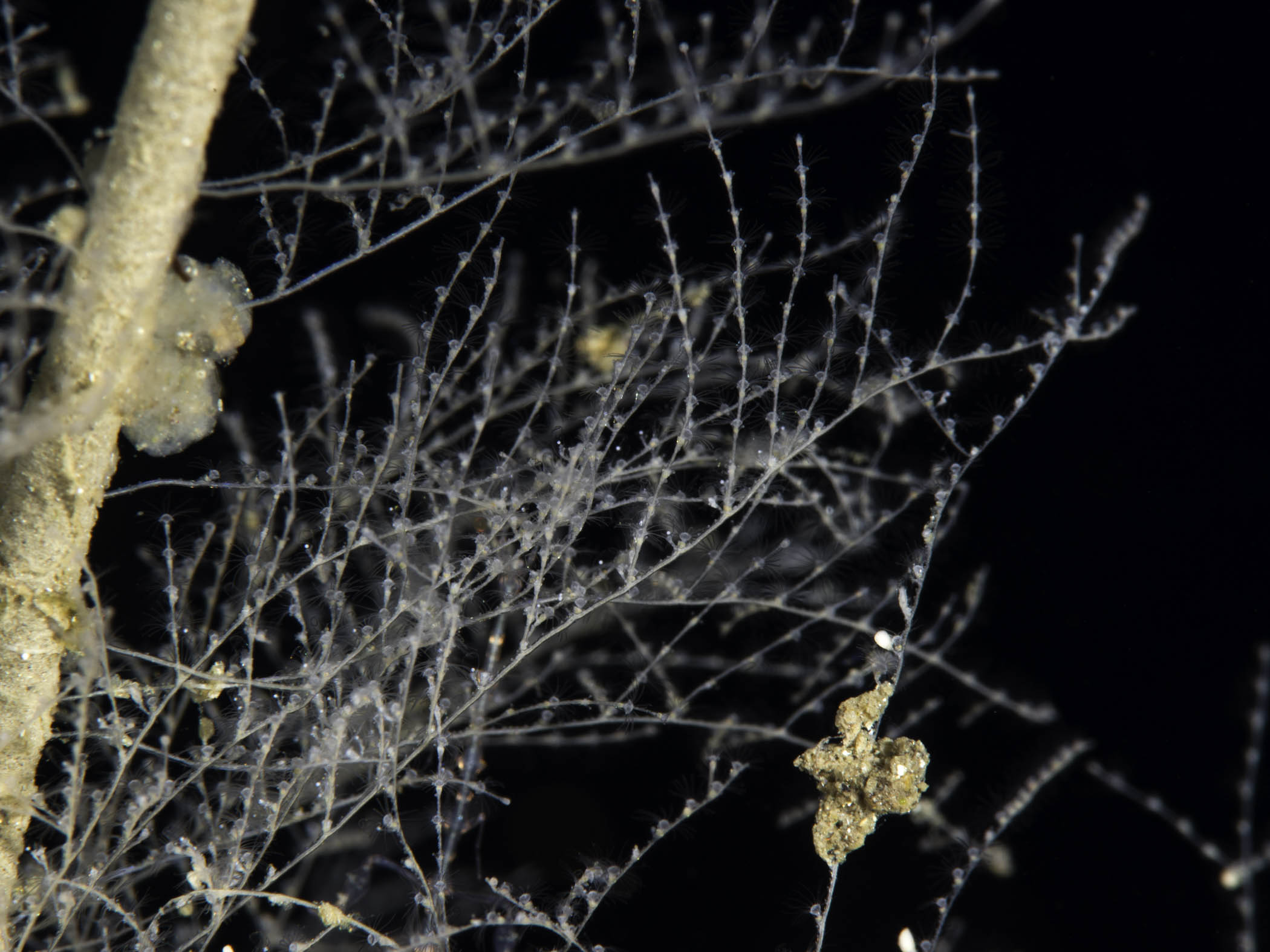| CNIDARIA : Leptothecata : Halopterididae | SEA ANEMONES AND HYDROIDS |
Halopteris catharina (Johnston, 1833)
 |
| Halopteris catharina |
Description: This hydroid consists of groups of very delicate, pinnately-branched colonies. Each has a main stem with widely spaced, opposite branches, these branches may themselves give rise to secondary pairs of branches in larger colonies. The hydrothecae are borne in a single series on the branches, each accompanied by two pairs of lateral nematothecae and separated by one to several mesial nematothecae. Living colonies are colourless, and easily overlooked. Colonies typically 30-40mm in height.
Habitat: Usually attached to bedrock, often on vertical surfaces where water movement is more exaggerated. Most common in moderate tidal streams. This is also a common species on wrecks.
Ecology: The nudibranch Doto maculata is apparently confined to this hydroid.
Distribution: Widely distributed in the British Isles.
Key Identification Features:
- Delicate pinnate colonies with opposite branching.
Distribution Map from NBN: Halopteris catharina at National Biodiversity Network mapping facility, data for UK.
iNaturalist: Halopteris catharina at iNaturalist World Species Observations database.
GBIF data for Halopteris catharina
WoRMS: Halopteris catharina at World Register of Marine Species. Accepted name: Halopteris catharina (Johnston, 1833). AphiaID: 117631.
Classification: Biota; Animalia; Cnidaria; Medusozoa; Hydrozoa; Hydroidolina; Leptothecata; Plumularioidea; Halopterididae; Halopteris
| Previous species | Next species |
| Picton, B.E. & Morrow, C.C. (2024). Halopteris catharina. (Johnston, 1833). [In] Encyclopedia of Marine Life of Britain and Ireland. https://www2.habitas.org.uk/marbiop-ni/speciesaccounts.php?item=D5780. Accessed on 2025-04-10 |
